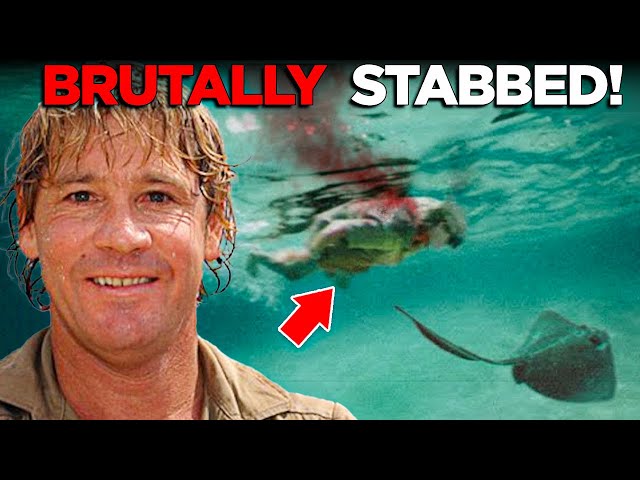How Did Steve Irwin Die?
Steve Irwin, widely known as the “Crocodile Hunter,” was an Australian wildlife expert, television personality, and conservationist who gained global fame for his adventurous and often dangerous encounters with wildlife. His untimely death on September 4, 2006, shocked fans around the world and raised questions about the risks associated with wildlife interactions. This article will explore the circumstances surrounding Irwin’s death, the impact it had on wildlife conservation, and the legacy he left behind.
Background on Steve Irwin
Steve Irwin was born on February 22, 1962, in Essendon, Victoria, Australia. He grew up in a family passionate about wildlife conservation. His parents, Bob and Lyn Irwin, founded the Beerwah Reptile Park, which later became the Australia Zoo. From a young age, Irwin was immersed in the world of reptiles and wildlife, developing a deep appreciation for nature.Irwin gained international fame through his television series, The Crocodile Hunter, which premiered in 1992. The show featured his daring encounters with crocodiles, snakes, and other dangerous animals, showcasing his enthusiasm for wildlife and conservation. Irwin’s charismatic personality and catchphrases, such as “Crikey!” endeared him to audiences around the globe.
The Circumstances of Irwin’s Death
On September 4, 2006, Steve Irwin was filming an underwater documentary titled Ocean’s Deadliest near Batt Reef, off the coast of Port Douglas, Queensland, Australia. During a break in filming caused by inclement weather, Irwin decided to snorkel in shallow waters to capture footage for his daughter Bindi’s television program.While swimming, Irwin encountered a short-tail stingray. The stingray, feeling threatened, reacted defensively. Irwin approached the stingray from behind, attempting to film it swimming away. In a sudden movement, the stingray propped itself up and struck Irwin multiple times with its tail, driving its barb into his chest.
The Injury and Immediate Aftermath
The stingray’s barb pierced Irwin’s thoracic wall and penetrated his heart, causing massive trauma. Initially, Irwin believed he had only sustained a punctured lung. However, the injury was far more severe. Crew members aboard Irwin’s boat quickly administered CPR and rushed him to the nearby Low Island, where medical staff pronounced him dead shortly after arrival.Irwin’s death marked a rare and tragic incident, as fatalities from stingray encounters are extremely uncommon. According to reports, only 20 fatalities from stingray injuries have been recorded worldwide since 1945. The circumstances surrounding Irwin’s death were particularly shocking due to his extensive experience with wildlife and his reputation as a fearless animal handler.
Reactions to Irwin’s Death
News of Steve Irwin’s death spread rapidly, prompting an outpouring of grief from fans, fellow conservationists, and public figures. Australian Prime Minister John Howard expressed “shock and distress,” stating that “Australia has lost a wonderful and colourful son.” Flags at the Sydney Harbour Bridge were lowered to half-mast in honor of Irwin.In the days following his death, tributes poured in from around the world. Special programs aired on television networks, including Animal Planet and CNN, celebrating Irwin’s life and contributions to wildlife conservation. Thousands of fans visited the Australia Zoo to pay their respects, leaving flowers, candles, and messages of support.
The Impact on Wildlife Conservation
Steve Irwin’s death raised awareness about the dangers of wildlife interactions and the importance of conservation efforts. Irwin was a passionate advocate for protecting endangered species and their habitats. He founded the organization Wildlife Warriors Worldwide, which aimed to promote wildlife conservation and education.In the wake of his death, many conservationists emphasized the need for responsible wildlife interactions. Irwin’s legacy continues to inspire efforts to protect wildlife and educate the public about the importance of respecting nature. His daughter, Bindi Irwin, has followed in her father’s footsteps, continuing his work in wildlife conservation and education.
The Legacy of Steve Irwin
Steve Irwin’s legacy extends far beyond his television persona. He is remembered for his unwavering dedication to wildlife conservation and his efforts to educate the public about the importance of protecting the natural world. His charismatic personality and genuine passion for animals resonated with millions, making him a beloved figure in the realm of wildlife education.Irwin’s impact on wildlife conservation is evident in the continued success of the Australia Zoo, which has grown significantly since his passing. The zoo remains a popular destination for visitors and continues to promote conservation efforts and education programs.
Frequently Asked Questions
Q: What caused Steve Irwin’s death?
A: Steve Irwin died from a stingray injury. The barb of a short-tail stingray pierced his chest and penetrated his heart, leading to massive trauma and cardiac arrest.
Q: Where did the incident occur?
A: The incident occurred near Batt Reef, off the coast of Port Douglas, Queensland, Australia.
Q: Was Steve Irwin’s death captured on video?
A: Yes, the incident was filmed, but the footage has not been released to the public. It is known to exist, but there are ethical concerns regarding its release.
Q: How rare are stingray fatalities?
A: Fatalities from stingray injuries are extremely rare. Since 1945, only about 20 fatalities have been recorded worldwide.
Q: What was Steve Irwin’s legacy in wildlife conservation?
A: Steve Irwin is remembered for his passionate advocacy for wildlife conservation, his educational efforts, and the establishment of Wildlife Warriors Worldwide. His work continues to inspire future generations to protect endangered species and their habitats.
Conclusion
Steve Irwin’s death was a tragic event that shocked the world and highlighted the inherent risks associated with wildlife interactions. Despite the circumstances of his passing, Irwin’s legacy as a passionate advocate for wildlife conservation endures. His contributions to education and conservation continue to inspire individuals to appreciate and protect the natural world. Through his family and organizations, Irwin’s spirit lives on, reminding us of the importance of respecting wildlife and the environment.
| Feature | Description |
|---|---|
| Date of Death | September 4, 2006 |
| Cause of Death | Stingray injury |
| Location | Batt Reef, Port Douglas, Queensland |
| Age at Death | 44 years old |
| Legacy | Wildlife conservation and education advocate |
For more detailed information about Steve Irwin’s life and death, you can refer to the Wikipedia page on Steve Irwin.



